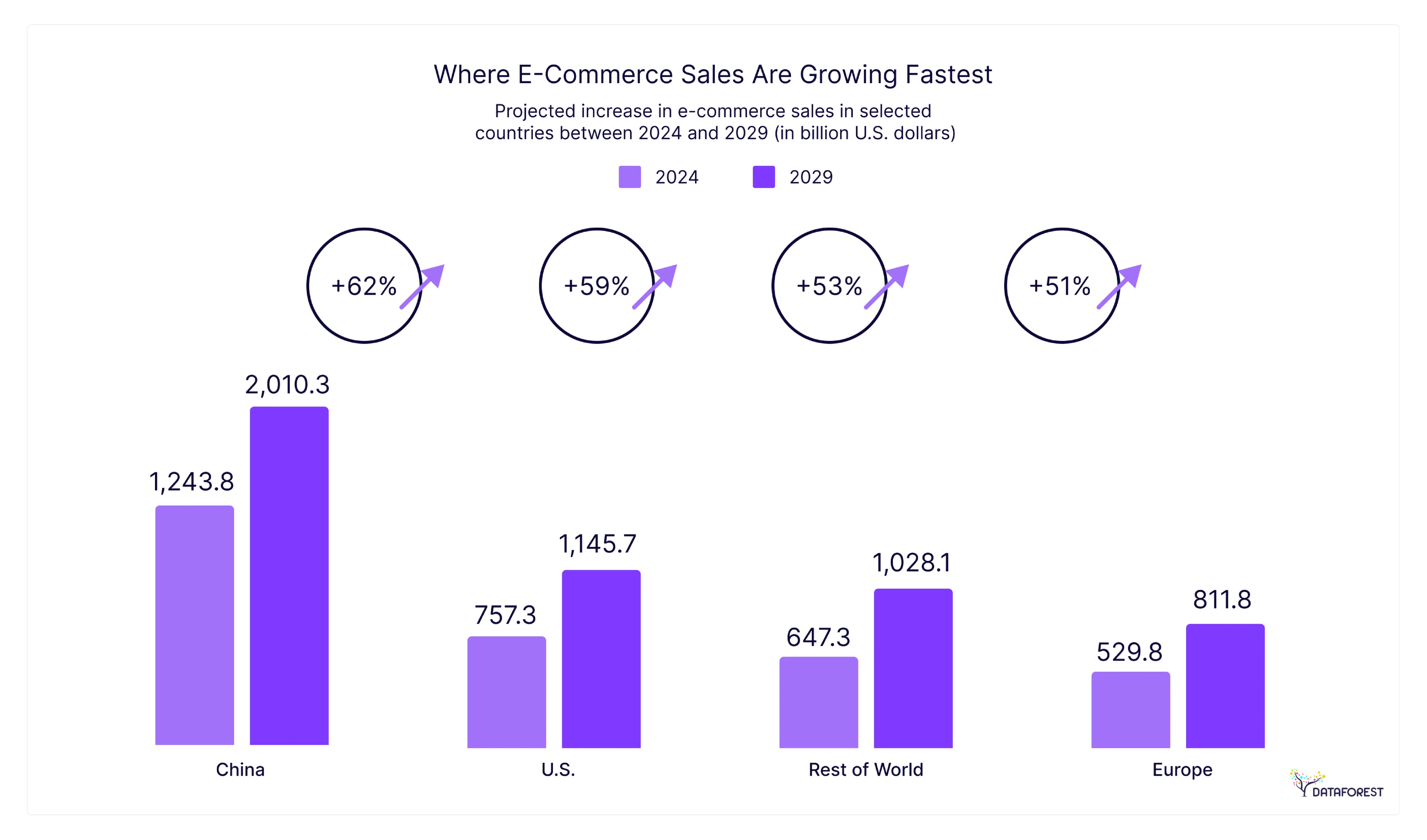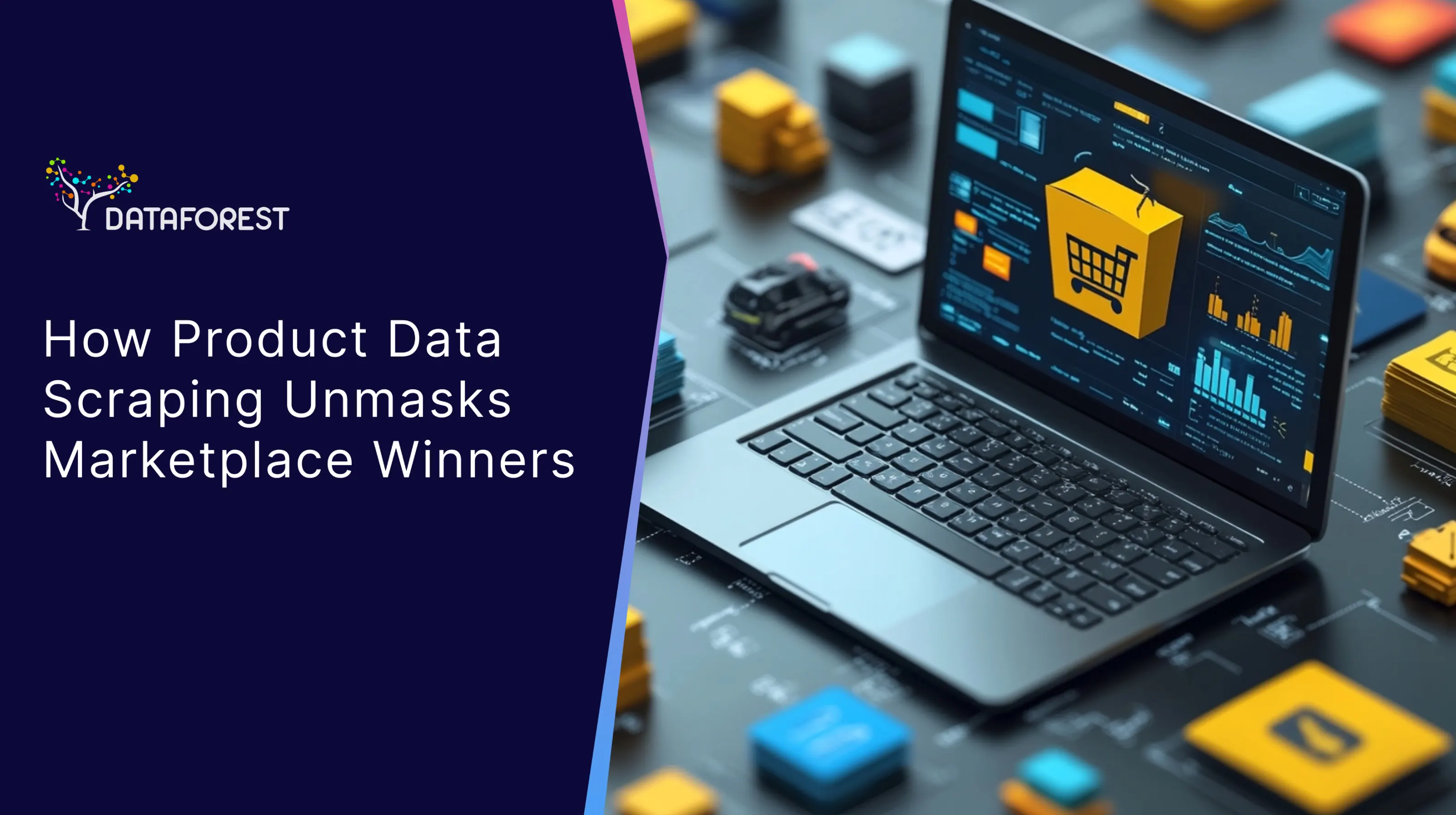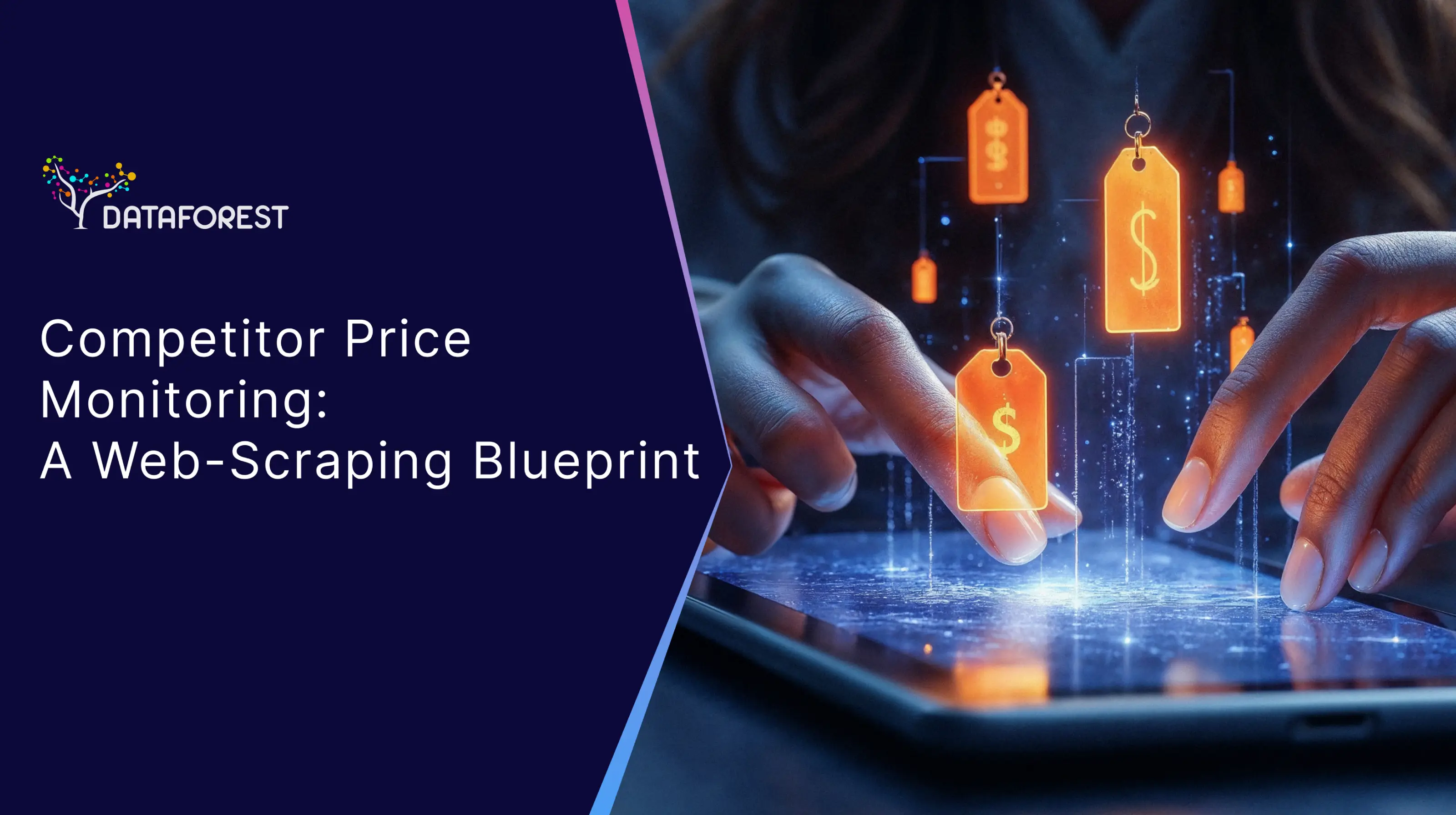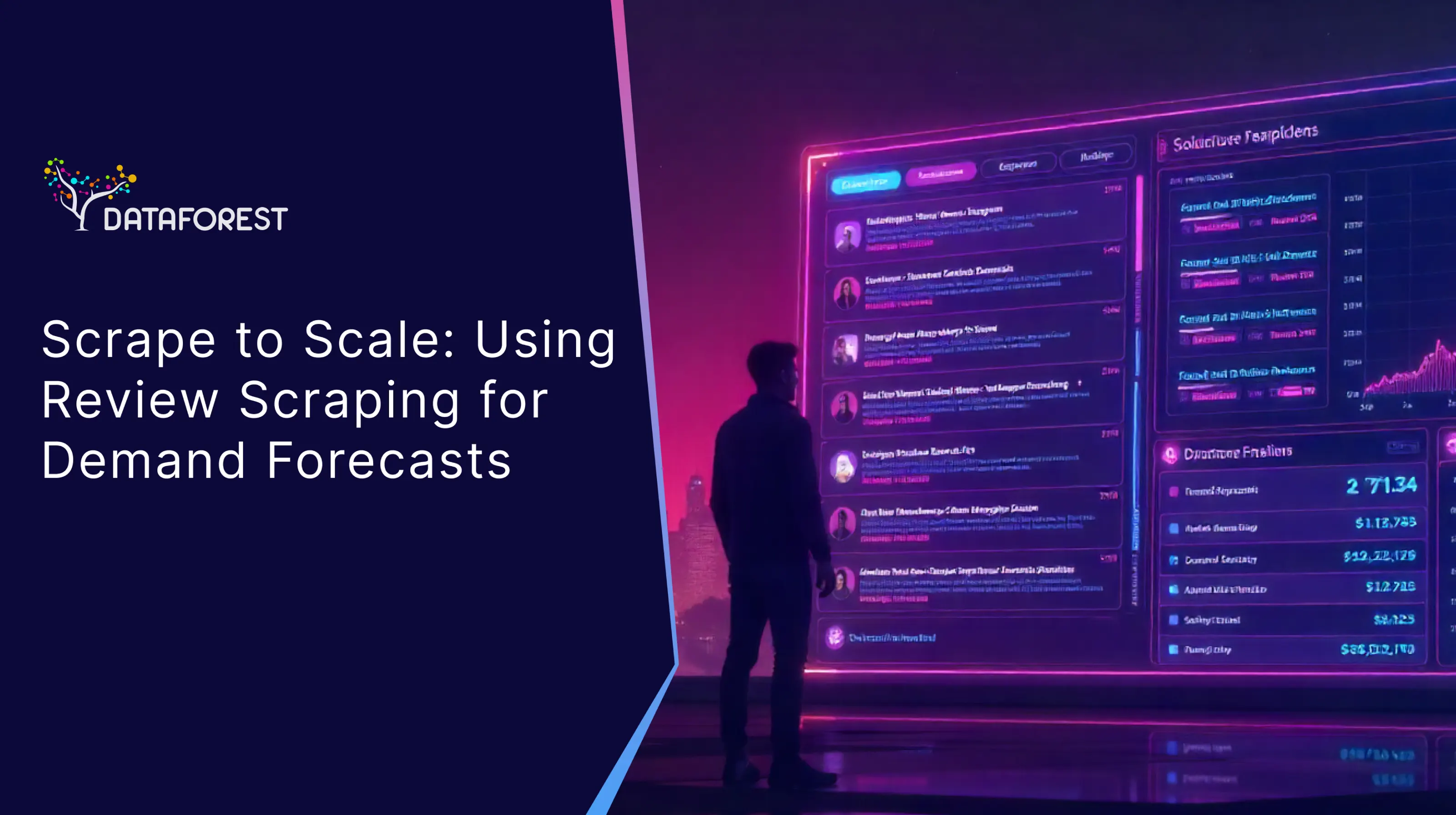Beyond the Digital Shelf: The Unseen Battlefield of eCommerce
In the hyper-competitive arena of digital marketplaces, most businesses are fighting with one hand tied behind their backs. They obsess over what's visible: product listings, advertised prices, and competitor assortments. This is surface-level data—necessary, but dangerously incomplete. It's like judging a chess match by only looking at the pieces on the board, with no knowledge of the moves that have already been made. The real story, the one that dictates market momentum and profitability, is hidden in plain sight: the record of what has actually sold.

Analyzing sold listings is not just a tactic; it's the closest an eCommerce business can get to possessing a crystal ball. This is where the true market price is revealed, where actual consumer demand is quantified, and where nascent trends first flicker to life. Without a systematic way to capture and interpret this information—a process driven by sophisticated marketplace scraping—a business isn't just missing out on opportunities. It's flying blind, making critical inventory, pricing, and strategic decisions based on assumptions, while competitors armed with real data are acting on certainty. The insights derived from scraping sold products are the dividing line between reactive enterprises that follow the market and proactive leaders that shape it.
What Sold-Item Scraping Reveals (and Why It Pays Off)
Looking past the digital window dressing of active listings to the hard reality of sold items is a complete game-changer. It forces a shift in focus from guesswork to documented results, delivering a surgically precise, evidence-based map of the market's real mechanics. This is the foundation of genuine marketplace insights.
From Top Sellers to Pricing Patterns
That top-ranking product you see? It doesn't always translate to a high sales volume. It might just be good at catching the algorithm's eye while failing to actually convert shoppers. Sold item scraping obliterates this ambiguity. By systematically extracting data on completed transactions from platforms like Amazon, eBay, or Walmart Marketplace, you can assemble an undeniable picture of what's happening on the ground:
- True Market Dominance: Pinpoint which competitors are not just making noise, but are genuinely moving the most product. You can measure their market share in key niches with unnerving accuracy.
- Winning Price Points: A competitor lists an item for $99, but is anyone buying it at that price? Sold listings expose the real transaction prices, including privately accepted "Best Offer" figures. This intelligence is pure gold for product listing optimization and nimble pricing strategies. It's the difference between pricing yourself out of a sale and leaving cash on the table. And we aren't talking about pocket change; as a McKinsey report points out, data-driven pricing can boost revenues by 2-4% and profitability by an impressive 15-20%.
- Product Velocity and Seasonality: Grasp how fast specific products are actually selling and chart their rhythm over time. This real-time sales tracking lets you preempt seasonal demand surges and stock up intelligently, or recognize when a product's star is beginning to fade.
This degree of granularity, unlocked through professional web scraping of product data, elevates your strategy from a spreadsheet exercise into a real-world competitive plan based on hard facts.
Early Warning System for Failing Trends
Just as vital as backing the right horse is knowing when to get out of a losing race. In today's blistering eCommerce world, trends don't just fade; they can utterly collapse in a few short months. Last quarter's hero product can quickly become this quarter's dead weight.
Sales trend detection built on sold-item data serves as your canary in the coal mine. Monitoring the sales cadence and price resilience of products gives you a critical edge:
- Detect Waning Demand: Is the number of sold items for a hot gadget dropping each week? Is the average sale price slowly bleeding out as sellers fight over a shrinking pool of buyers? These are the first tremors of a market shift, giving you time to strategically pare down inventory, cancel reorders, and redirect your capital toward the next big thing.
- Avoid the "Race to the Bottom": Once a market gets crowded, a price war is inevitable. Scraping product data from sold listings shows you the real-time price floor and how fast items are moving at that basement level. If you see high volume but razor-thin margins, you know it's time to pivot or get out, sidestepping a brutal conflict that no one really wins.
The Tool Trap: Why DIY Scraping Doesn't Scale
Recognizing the need for this data, many businesses reach for an off-the-shelf scraping tool or a simple browser plugin. This is a classic mistake. While these tools seem easy and cheap, they are a strategic trap for any serious operation. The digital marketplace is a living, breathing ecosystem, not a static webpage.
Tools Break, Markets Move
The weaknesses of generic scrapers become painfully obvious almost immediately:
- Brittleness: Marketplaces are constantly tweaking their code, deploying new anti-bot defenses, and changing layouts. A minor site update can instantly shatter your off-the-shelf tool, cutting off your data lifeline without warning.
- Lack of Customization: Canned tools pull canned data. Need to capture something specific, like seller tenure on sold items or the final price after shipping? You're likely out of luck. They are built for the lowest common denominator, not your specific strategic needs.
- Scalability Issues: Try running a large-scale product data scraping operation across an entire category with a basic tool. You'll quickly run into IP bans, throttled connections, and incomplete datasets. These tools simply lack the heavy-duty architecture needed for reliable, high-volume intelligence gathering.
Leaning on these tools creates a dangerous illusion of being data-driven. You have a process, but it's fragile, shallow, and no match for competitors who are investing in serious data insights.
DATAFOREST's Advantage: Tailored Scraping for Your Market Goals
The antidote to the flimsy, one-size-fits-all tool is a professionally managed, custom web scraping solution. Think of it not as a tool you rent, but as an intelligence pipeline we build and operate for you—a secure, scalable flow of information engineered specifically to meet your business objectives. At DATAFOREST, we build these data engines from scratch, ensuring they align perfectly with your strategic vision.
Built for Startups and Enterprises Alike
It doesn't matter if you're an agile startup aiming to disrupt a market or a Fortune 500 incumbent defending its territory; the demand for clean, reliable data is a universal constant. Our method for web scraping marketplace data is crafted to grow with your ambitions. We engineer bespoke solutions that zero in on the exact marketplaces, data fields, and delivery formats you need. This philosophy is the engine behind our scraping services for enterprises, serving demanding industries from e-commerce to retail.
From Raw Data to Strategic Value
Getting the data is just the ticket to the game. Winning requires interpretation and integration. DATAFOREST doesn't just hand you a messy spreadsheet and wish you luck. We refine chaotic web data into pristine, structured feeds (like CSV, JSON, or direct database delivery) that plug right into your existing analytics and decision-making platforms. We help you translate a torrent of numbers into decisive marketplace analytics by:
- Creating Custom Dashboards: Visualize market currents, keep tabs on rivals, and monitor pricing shifts as they happen.
- Integrating with BI and CRM Systems: Funnel live market intelligence directly into your essential tools like Tableau, Power BI, or internal Advanced Planning Systems.
- Providing Actionable Reports: We collaborate with you to define what matters and deliver clear reports that answer your most urgent business questions.
This process transforms product data web-scraping from a technical chore into a formidable strategic weapon.
Success in Action: A Custom Scraper That Changed the Game
Picture a mid-sized electronics retailer getting hammered on Amazon. They were stuck in a price war they couldn't win and kept missing the boat on the burgeoning market for refurbished audio gear. Their "strategy" was little more than a frantic, manual check of competitor pages—a process that was both inefficient and wildly inaccurate.
After partnering with DATAFOREST, they deployed a custom web scraping solution aimed squarely at scraping sold products across both Amazon and eBay. In under two months, the findings were staggering:
- Niche Identification: The data unearthed a booming, yet poorly served, demand for refurbished high-end gaming headsets. Plenty of sellers listed them, but only a handful had consistent sales, and their pricing was all over the map.
- Data-Driven Pricing: By analyzing the actual sold prices, they discovered a market sweet spot that was 15% higher than they had assumed, yet was still a magnet for buyers.
- Inventory Optimization: They used the sales velocity data to completely re-engineer their stock, tripling down on the three hottest refurbished models and slashing their investment in slower-moving new items.
The payoff was huge. They seized a commanding share of this niche, boosting their profit margins in the category by a full 40% in just six months. This story, which you can read about in our case studies, is a textbook example of how targeted scraping of product data directly fuels smarter growth.
DATAFOREST vs. One-Size-Fits-All Tools
For any serious business, the choice becomes remarkably simple. Off-the-shelf tools might get you started, but they can't take you where you need to go.
Ready to See What Your Competitors Are Really Selling?
It's time to stop guessing and start knowing. The intelligence you need to corner your market is out there, waiting for you to claim it. If you're serious about moving past superficial metrics to gain a lasting competitive edge, the conversation starts here.
Book a Free Consultation with DATAFOREST
Set up a complimentary, no-strings-attached consultation with a DATAFOREST data strategist. We'll dive into your specific goals, assess your target markets, and map out a practical plan to forge raw data into your sharpest competitive tool.
The Strategic Imperative of Marketplace Intelligence
In this digital economy, thinking of data as a mere asset is already outdated; it's the very lifeblood of a modern competitive strategy. To operate with incomplete or stale information isn't just a handicap—it's a deliberate choice to lose. The discipline of sold item scraping delivers the most accurate, immediate, and actionable intelligence available on any marketplace. It's the ground truth for pricing, demand, and the competitive pecking order.
By deploying a resilient, custom web scraping solution, a business can finally see the entire chessboard. This vantage point allows you to predict market pivots, fine-tune every part of your sales engine, and consistently outmaneuver the competition. The definitive winners in tomorrow's eCommerce arena will be the organizations that master this deeper intelligence today.
Frequently Asked Questions (FAQ)
What is sold-item scraping, and how is it different from regular product scraping?
Sold-item scraping is forensic; it targets and pulls data exclusively from listings that have already been sold. In contrast, regular product data scraping looks at active listings—what's currently on the shelf. The first tells you what people are actually buying; the second only tells you what a competitor is trying to sell.
Which marketplaces can be scraped for sold item data?
If a marketplace shows a public history of sold goods, it can be scraped. This covers giants like eBay (with its explicit "Sold Items" filter), Amazon (through careful analysis of Best Seller Ranks and stock levels), Etsy, Poshmark, and countless other niche platforms. A custom web scraping solution is adaptable to the unique architecture of any site.
Can sold-item data reveal pricing strategies used by leading competitors?
Without a doubt. It's one of its most potent applications. Watching sold data lets you see how rivals use dynamic pricing, what kind of discounts they offer to clear inventory, and the true market price for items where "Best Offer" deals are common. Learn more in our guide on web price scraping.
Is it legal and compliant to scrape sold listings from online marketplaces?
Scraping public data is broadly protected as legal, a stance reinforced by landmark court decisions like hiQ Labs v. LinkedIn. The critical factor is how the scraping is performed. A professional partner like DATAFOREST ensures all data acquisition is done ethically, respecting site terms, privacy laws like GDPR/CCPA, and using methods that don't harm the marketplace's infrastructure.
What kind of business insights can I get from sold-item scraping?
The intelligence impacts every corner of your business:
- Strategy: Uncover overlooked niches and get ahead of market trends.
- Marketing: Nail your pricing and truly understand what buyers want.
- Operations: Sharpen inventory control and demand forecasts.
- Sales: Get hard numbers on competitor sales and market share. It provides a full, 360-degree command of the market. You can dive deeper into these applications in our post on web scraping use cases.
What's the difference between sold-item monitoring and inventory tracking?
Think of it this way: sold-item monitoring is like watching the cash register for the entire mall to see what's popular. Inventory tracking is like counting the stock on one store's shelf to guess how much they're selling. The first gives you a direct confirmation of a sale across the market. The second is an estimate for a single competitor. A truly effective marketplace scraping strategy often blends both approaches for a complete picture.






















